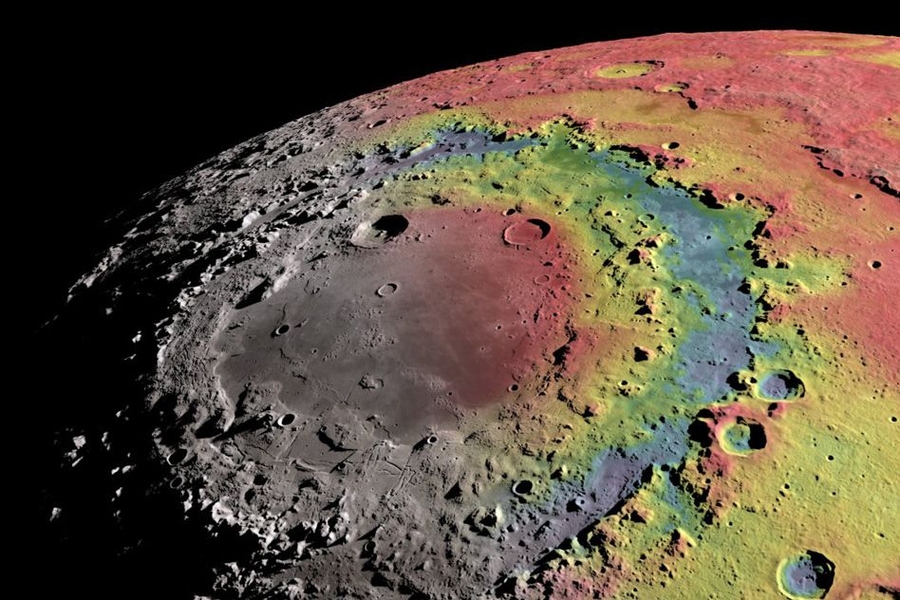 Mercury's Vivaldi Crater from BepiColombo
Mercury's Vivaldi Crater from BepiColomboExplanation: Why does this large crater on Mercury have two rings and a smooth floor? No one is sure. The unusual feature called Vivaldi Crater spans 215 kilometers and was imaged again in great detail by ESA's and JAXA's robotic BepiColombo spacecraft on a flyby earlier this month. A large circular feature on a rocky planet or moon is usually caused by either an impact by a small asteroid or a comet fragment, or a volcanic eruption. In the case of Vivaldi, it is possible that both occurred -- a heavy strike that caused a smooth internal lava flow. Double-ringed craters are rare, and the cause of the inner rings remains a topic of research. The speed-slowing gravity-assisted flyby of Mercury by BepiColombo was in preparation for the spacecraft entering orbit around the Solar System's innermost planet in 2026.
| << Previous APOD | This Day in APOD | Next APOD >> |


